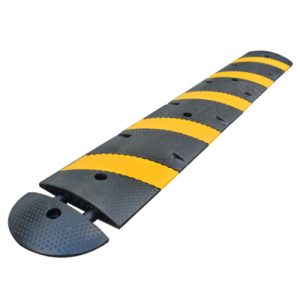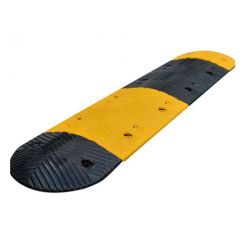If you’re driving in an area with a lot of speed bumps and humps, you should know what they are, how to avoid them, and what they mean to your car’s suspension. Speed bumps are part of the road experience, but you should always be aware of them so you don’t accidentally hit one.
If your car has low ground clearance, take special care when driving on them. Also, bumps can cause damage to a car that already has a high amount of damage.
Why aren’t speed bumps recommended for emergency roadways?
Although they may seem like a great idea, speed humps and bump strips aren’t recommended for arterial or emergency roadways, since they can cause drivers to lose control of their vehicles. The most common type of speed bump is made of rubber or asphalt, although there are also metal and plastic versions.
The most common colors for speed bumps are yellow and black. In the winter, snowplows can damage them. If you’re a concerned about ice and snow, you can always install temporary bumps. But remember to always follow the rules.
Another type of speed humps are known as ‘speed humps.’ These traffic control devices cause vehicles to slow down to less than 15 miles per hour. However, some speed bumps are smaller and wider than speed humps.
They’re generally placed mid-block between intersections to slow down traffic. In these cases, they will decrease a vehicle’s speed to around five miles per hour or less. Regardless of which type you choose, it’s always a good idea to consider where they’re most needed.

Recycled Rubber Speed Hump – Yellow / Black Single Lane or Double Lane

Heavy Duty Rubber Speed Hump – Yellow / Black – Low Profile Speed Bump
| SKU | Description | Length | Height | Width | Weight |
|---|---|---|---|---|---|
| SB206FT | 6 Ft Speed Bump (1) 6′ Section With no End Caps | 72″ | 2″ | 12″ | 48.40 |
| SB207FT | 7 Ft Speed Bump (1) 6′ Section + (2) End Caps | 86″ | 2″ | 12″ | 55.40 |
| SB213FT | Single Lane 12 Ft Speed Bump (2) 6′ Section With no End Caps | 144″ | 2″ | 12″ | 96.80 |
| SB219FT | Double lane 19 Ft Speed Bump (3) 6′ Section + (2) End Caps | 230″ | 2″ | 12″ | 152.20 |
| SB225FT | 25 Ft Speed Bump (4) 6′ Section + (2) End Caps | 302″ | 2″ | 12″ | 200.60 |
| SB2ECAP | End cap | 7′ | 2′ | 12′ | 3.50 |
| SKU | Description | Length | Height | Width | Weight |
|---|---|---|---|---|---|
| SB3039I | 39″ Speed Bump (1) 39″ Section With no End Caps | 39″ | 2″ | 13.7″ | 36.20 |
| SB3117I | 117″ Single Lane Speed Bump (3) 39″ Sections With no End Caps | 117″ | 2″ | 13.7″ | 108.60 |
| SB3137I | 137″ Single Lane Speed Bump (3) 39″ Sections + (2) End Caps | 137″ | 2″ | 13.7″ | 124.20 |
| SB3234I | 234″ Double lane Speed Bump (6) 39″ Sections With no End Caps | 234″ | 2″ | 13.7″ | 217.20 |
| SB3254I-2 | 254″ Double Lane Speed Bump (6) 39″ Sections + (2) End Caps | 254″ | 2″ | 13.7″ | 232.80 |
| SB3ECAP-2 | End cap | 10″ | 2″ | 13.7″ | 7.80 |
| SKU | Description | Length | Height | Width | Weight |
|---|---|---|---|---|---|
| SH1018I | 18.75″ Speed Bump (1) 18.75″ Section with no End Caps | 18.75″ | 1.25″ | 2″ | 22.20 |
| SH1112I | 112.5″ Single Lane Speed Bump (6) 18.75″ Sections with no End Caps | 112.5″ | 1.25″ | 2″ | 133.20 |
| SH1128I | 10 Ft Single Lane Speed Bump (6) 18.75″ Sections + (2) End Caps | 128.5 | 1.25″ | 2″ | 148.80 |
| SH1225I | 225″ Double Lane Speed Bump (12) 18.75″ Sections with no End Caps | 225″ | 1.25″ | 2″ | 266.40 |
| SH1241I | 20 Ft Double Lane Speed Bump (12) 18.75″ Sections + (2) End Caps | 241″ | 1.25″ | 2″ | 282.00 |
| SH1ECAL | LEFT End Cap | 8″ | 1.25″ | 2′ | 7.80 |
| SH1ECAR | RIGHT End Cap | 8″ | 1.25″ | 2′ | 7.80 |
| SKU | Description | Length | Height | Width | Weight |
|---|---|---|---|---|---|
| SH2019I | 19.75″ Speed Bump (1) 19.75″ Section With no End Caps | 19.75″ | 2″ | 3″ | 48.00 |
| SH2121I | 10 Ft Single Lane Speed Bump (5) 19.75″ Sections + (2) End Caps | 121.75″ | 2″ | 3″ | 273.00 |
| SH2240I | 20 Ft Double Lane Speed Bump (11) 19.75″ + (2) End Caps | 240″ | 2″ | 3″ | 561.00 |
| SH2ECAL | LEFT End cap | 11.5″ | 2″ | 3′ | 16.00 |
| SH2ECAR | RIGHT End cap | 11.5″ | 2″ | 3′ | 16.00 |
What are the two traffic calming measurements?
A speed bump or a speed humps are two common types of traffic calming measurements. Both slow down traffic, but speed bumps slow traffic faster than humps. They both provide a jolt to drivers as they drive over them, which encourages drivers to slow down and check for pedestrians.
They’re much more effective than street signs, which can be overlooked, or even covered by a tree. These devices are made of similar materials, such as asphalt, concrete, or plastic.
A speed humps lawsuit filed by a property owner association in Connecticut, was dismissed because of its impact on emergency vehicles and the safety of local residents. A Connecticut court ruled against speed bumps in a separate case in 1978, citing the fact that they reduced emergency response times and created a public nuisance.
The Connecticut case, however, highlights the differences between speed humps and speed tables. Although many people think they are the same, there are a few major differences between them.
Final words
A speed hump is a temporary, raised structure on the pavement. The height of a speed hump is lower than that of a speed bump, and they are often narrower and less wide. They also produce a jarring experience for the vehicle occupants. Despite its name, a speed hump is used on private roads and parking lots. However, some cities do not permit speed humps on public streets.


